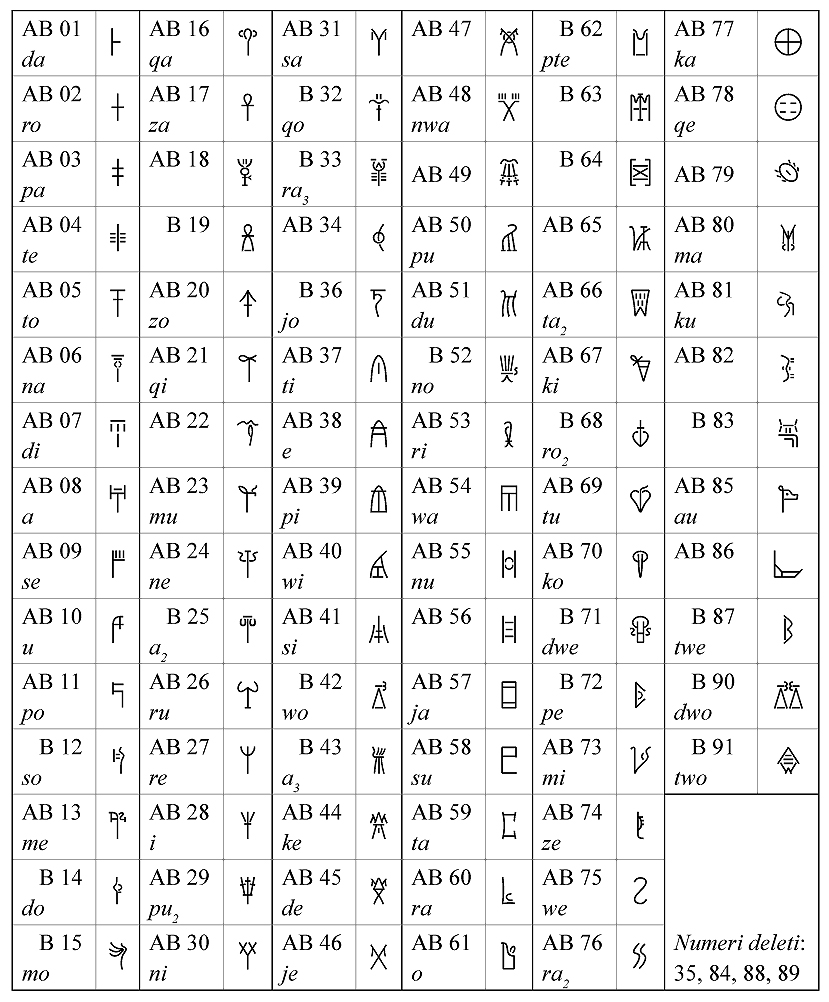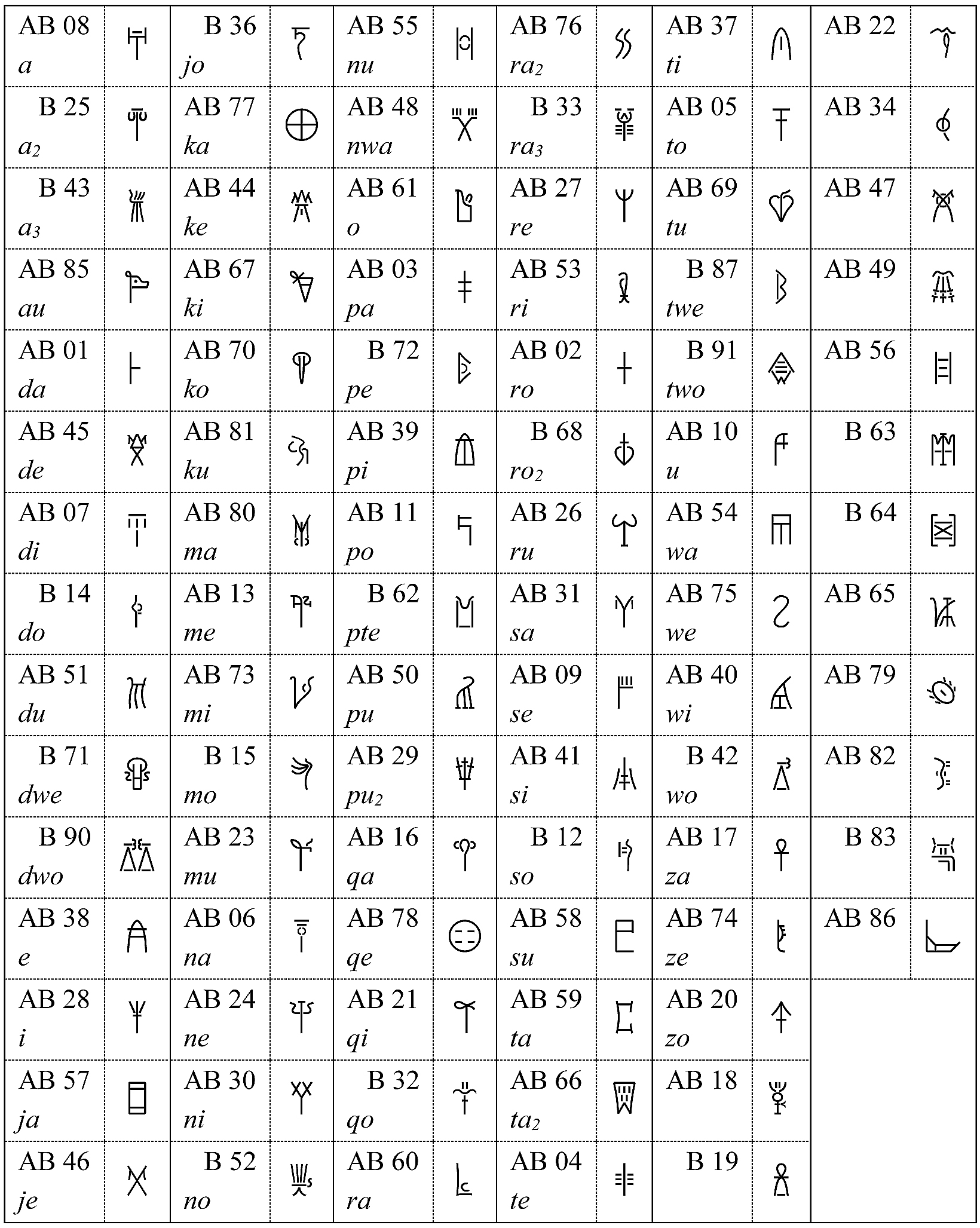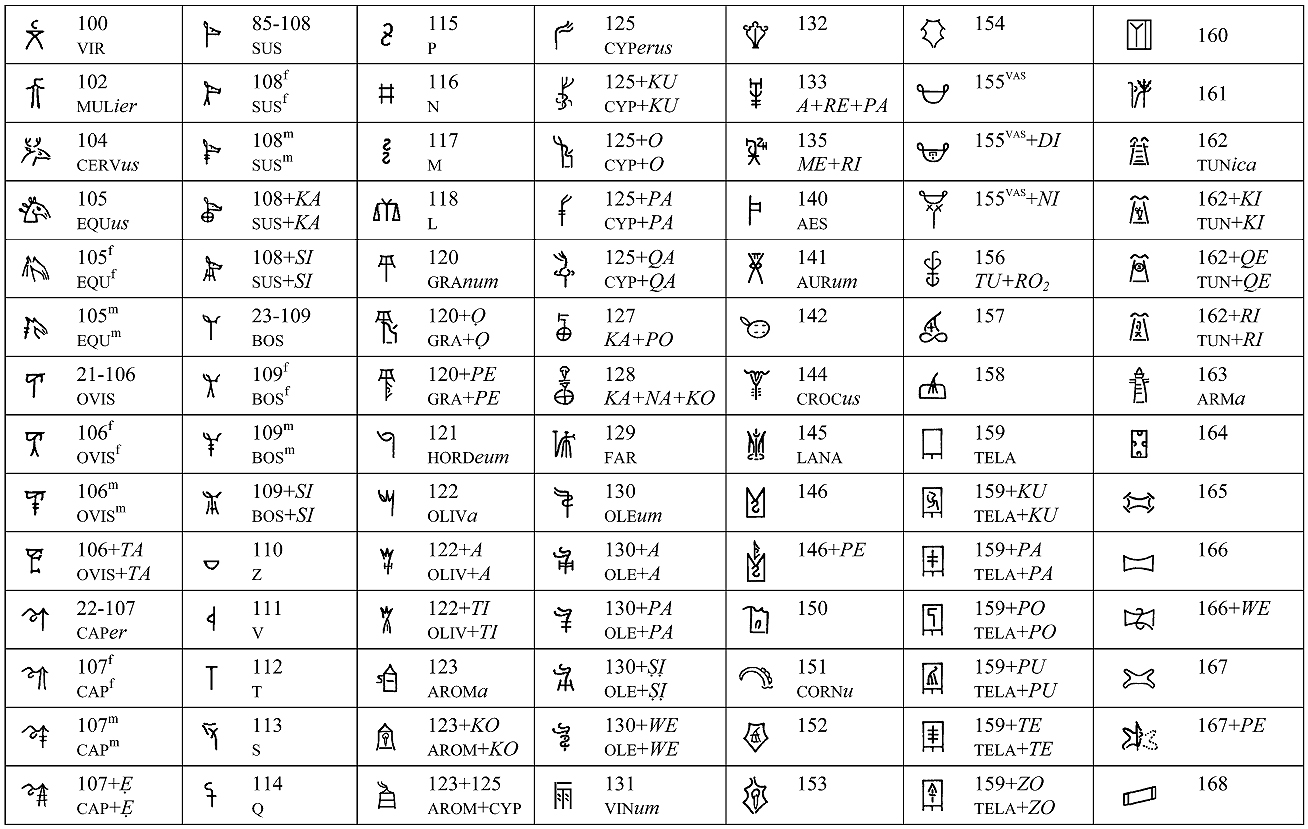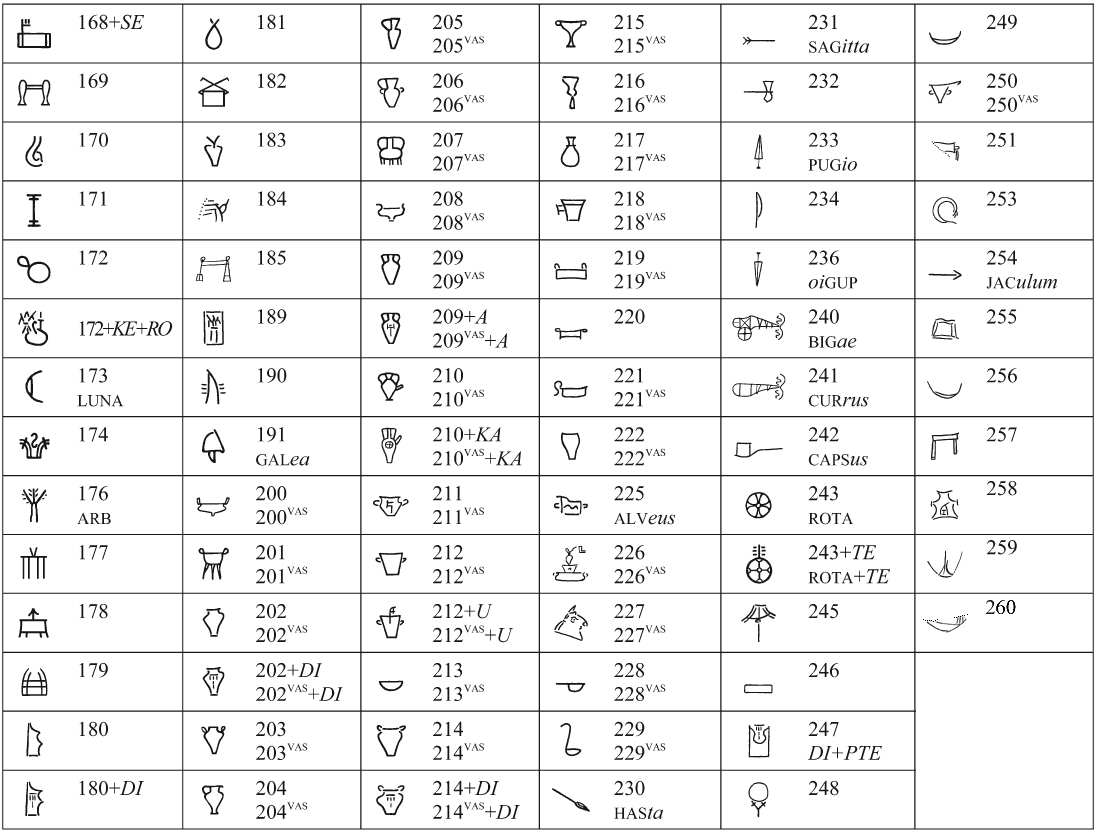Document
An 607
Findspot
Room 7 (7.4348)
Scribe
1
Palmprint
—
Chronology
LH III B2
M. Inv. No.
National Archaeological M. Athens 23684
| .1 | me-ta-pa , ke-ri-mi-ja , do-qe-ja , ki-ri-te-wi'-ja' | |
| .2 | do-qe-ja , do-e-ro , pa-te , ma-te-de , ku-te-re-u-p̣ị | |
| .3 | MUL 6 do-qe-ja , do-e-ra , e-qe-ta-i , e-e-to , | |
| .4 | te-re-te-we MUL 13 | |
| .5 | do-qe-ja , do-e-ro , pa-te , ma-te-de , di-wi-ja , do-e-ra , | |
| .6 | MUL 3 do-qe-ja , do-e-ra , ma-te , pa-te-de , ka-ke-u , | |
| .7 | MUL 1 do-qe-ja , do-e-ra ma-te , pa-te-de , ka-ke-u , | |
| .8 | MUL 3 | |
| .9 | vacat | |
| .10 | vacat | |
| .11 | ka | |
| .12 | vacat | |
| .13 | vacat | |
| .14 | vacat | |
| .15 | margo |
| Cut at bottom; perhaps palimpsest. | ||
| .3 | ⟦ḍọ-ẹ-⟧ before MUL; -ra over ⟦ro⟧. | |
| .4 | 13 over ⟦6⟧: the 10 which replaced the 6 seems to have been gradually increased to 13; rest of the line perhaps over erasure, unless the traces are palimpsestic. | |
| .5-8 | Lines written when clay was drier (PT3) and, perhaps, with a different stylus (which in no way implies another scribe). | |
| .6 | Final -u over erasure, which might explain why the “cross” is drawn in an unusual way for scribe 1 (cf. stroke order), and why the divider is different from those immediately above and below. | |
| .11 | ka PTT: KA (« sematogram ») Bennett 1992, p. 123. |

© Hellenic Ministry of Culture (HOCRED)
© The Palace of Nestor Excavations, Department of Classics, University of Cincinnati (photo by Emile Seraphis)
© The Palace of Nestor Excavations, Department of Classics, University of Cincinnati (photo by Emile Seraphis)



